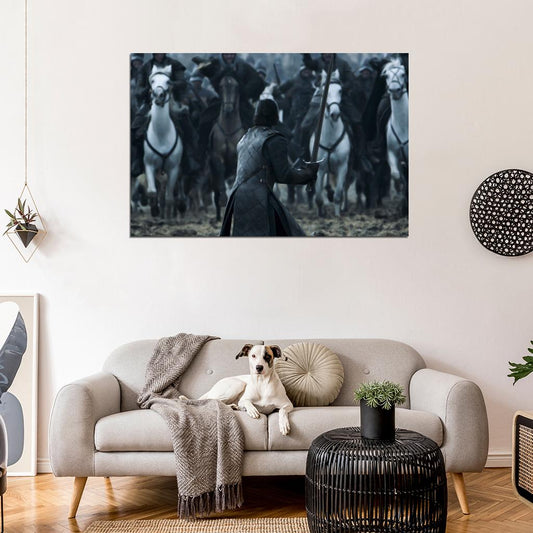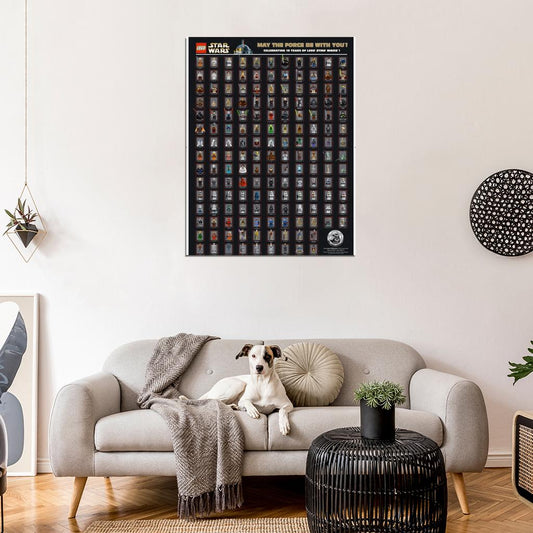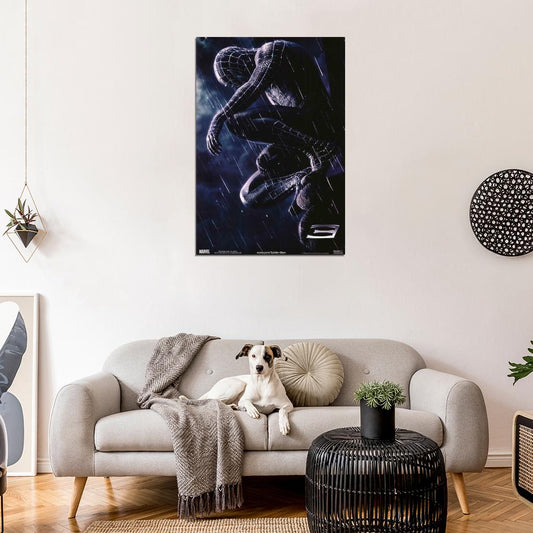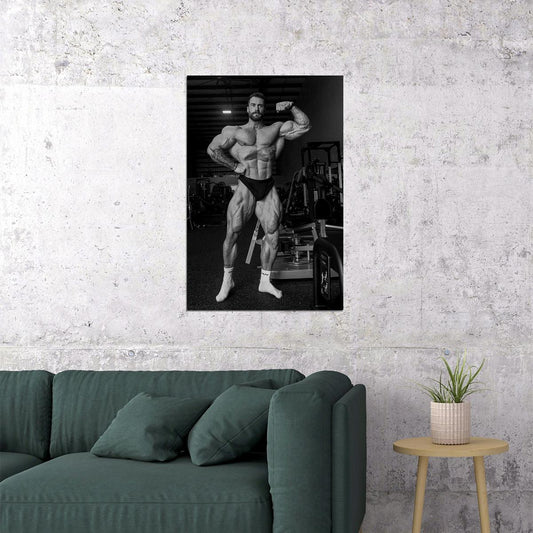Japanese painting and the design we use in our interiors carries immense philosophy and meanings rooted in the centuries-old culture of this country. It is unique, yet it can be learned to be understood and noticed in the surrounding space.
Key Ideals and Principles of Japanese Culture
The fundamental ideals and principles of Japanese culture are defined by four concepts that define the essence of beauty: sabi, wabi, shibui (from the ancient Shinto religion), and yūgen (from Buddhist philosophy).
1. Sabi - "The bloom of time" or "The beauty of antiquity"
It celebrates the natural beauty that unfolds with age. Japanese people have a very serene attitude towards age, not only towards their own but also towards surrounding objects: time reveals the essence of objects, showcasing their true beauty. The essence of sabi lies in seeing beauty in imperfections and asymmetry, in understanding the transience of life and its constant renewal. It is the ability of things to tell their story through wear and imperfections.
2. Wabi - "Simplicity"
It is the absence of extravagance, artificiality, or pomp, it is modesty and restraint. It is a wise restraint, conscious primitivism, the ability to be content with little, the beauty of balance and harmony. The true beauty of an object is manifested in its usefulness - something that is not used for practical purposes is not truly perceived as beautiful. From early childhood, Japanese people learn to find and appreciate beauty in everything that surrounds them in everyday life. In terms of style, minimalism vividly demonstrates the essence of wabi, as true beauty lies in simplicity and functionality.
3. Shibui - "Beauty in essence"
Shibui is expressed through simplicity, naturalness, the sense of the originality of the object, it is the beauty of the material, inherent in nature itself. It is beauty inherent in the object itself; there is no need to decorate it or try to make it perfect through additional actions. For example, a beloved item, despite its external flaws, is special and already has its own value.
4. Yūgen - "Understatement", "Space for imagination"
It is the hidden, mysterious beauty, the art of suggestion and the charm of the unspoken. Understanding the melancholic beauty of the world and the emotional experiences of a person that cannot be expressed in words. It is a kind of free space for imagination, an opportunity for each person to interpret what they see in their own way.
Japanese interior style attracts connoisseurs off minimalism, simplicity, and lovers of authentic culture. It particularly values the philosophy of unity with nature. The interior of an apartment or house is adorned with paintings of landscapes, bamboo in flower pots, an aquarium with fish, and bonsai - artificial Japanese trees.
Ukiyo-e
One of the most popular directions in Japanese painting is Ukiyo-e. This style is a mixture of realistic narrative of emaki ("picture scrolls") created in the Kamakura period and mature decorative style of the Momoyama and Tokugawa periods. "Ukiyo" is a Buddhist term meaning "the floating world," that is, constant changes, and "e" in Japanese means "picture."
Instead of filling the space with distracting details, ukiyo-e artists focus on a single object, emphasizing it with thoughtful lines and colors against a naturally beautiful background. While there are many variations, these components define the genre and distinguish it from other forms of visual art.

Key features of ukiyo-e:
- Bold noticeable lines
- Striking shapes
- Clean colors
- Artistic framing of figures
- Bright, bold shades
- Reflection of everyday objects and situations
- Great attention to nature
- Large-scale background with often asymmetrical placement of the main character (or characters) or focal point of the work.
Popular Genres of Ukiyo-e
1. Kachō-ga - Birds and Flowers
These are depictions of landscapes, flora, and fauna in the natural surroundings of Japan. The main rule is to depict two different species of birds or flowers. Often, they are accompanied by inscriptions describing the created birds and animals. Previously, it was customary to create large compositions consisting of several drawings.
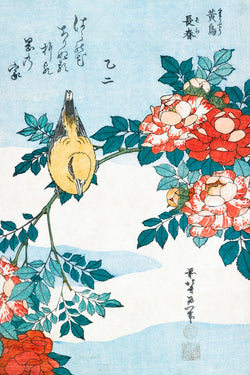
2. Meisho-e - Depictions of Famous Places
Depictions of renowned places (landmarks) of Japan during specific characteristic seasons.
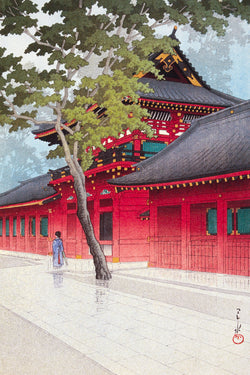
3. Fūkei-ga - Landscape Genre
Fūkei-ga is a Japanese genre of landscape prints. Fūkei-ga landscapes reflect a unique perspective on nature and culture in Japan, using traditional techniques and the stylistics of Japanese painting. Entire series of plots, often united by a single motif, were often produced.
Symbols in Japanyse painting
Mountains and water
Mountains and water in Japanese painting represent the opposites that constitute the driving force of the Universe.
Masculine and feminine principles, solid and immutable versus soft and changeable, light and dark (all that comprises the pair of yang and yin) - these opposites endlessly generate each other and coexist within each other, forming the harmony of creation, the reflection (and affirmation) of which is the main task of the artist.
Flowers
Flowers in Japanese painting embody elegance and beauty in the surrounding reality.
The inhabitants of this beautiful country are fortunate to observe many flowering plants, one of which is, of course, the cherry blossom or sakura.
From ancient times to the present day, the blooming of this tree never ceases to amaze with its beauty, inspiring poets, musicians, and artists. Sakura is the national flower of Japan because it fully embodies the true Japanese notion of beauty. Cherry blossom petals do not wither: they fall before any signs of withering appear on them. In this transience and inevitability of change, the Japanese see the source of beauty - genuine, unfinished, incomplete.
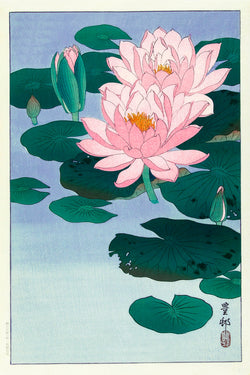
But it's not just sakura that holds immense significance for the Japanese, each flower has sacred meaning for them:
-
Chrysanthemum symbolizes the sun, abundance, and perfection.
-
Peonies represent courage and bravery.
-
Irises signify heroism and warrior spirit.
-
Hibiscus is a symbol of abundance.
-
Wild orchid symbolizes chastity.
-
Camellia represents endurance and longevity.
-
Wisteria symbolizes youth and grace.
-
Morning glory represents transience and uniqueness.
-
Lily symbolizes openness.
-
Rose symbolizes love.
Cranes
In Eastern culture, the crane is a revered bird symbolizing immortality, prosperity, happiness, family harmony, and even fertility. In Japan, the crane embodies moral qualities such as wisdom, justice, and nobility, and it is referred to as the "venerable lord crane."
For the Japanese, the red-crowned crane symbolizes prosperity and longevity. There's even a common saying: "A crane lives a thousand years, a turtle - ten thousand years," expressing a wish for long life.
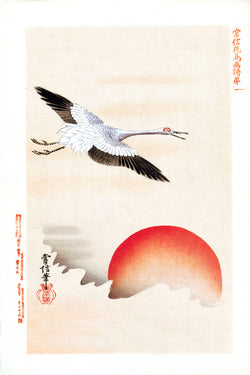
Cats
Cats hold a special place in the hearts and history of the Japanese people. Cats arrived in Japan on Chinese ships a thousand years ago. They caught mice on ships, and the Japanese began using them on farms to protect against rodents. Cats also inhabited temples, catching mice that often nibbled on Buddhist scrolls. Protection of agriculture and protection of religion. It's no wonder that the Japanese were charmed by their new guests, whom they then actively depicted in their paintings.
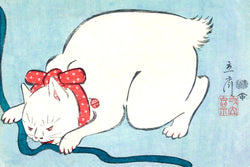
The cat's color takes an important part of Japanese culture:
-
White cats symbolize purity and innocence.
-
Black cats protect against evil spirits.
-
Red cats bring wealth to their owners.
-
Three-color cats, known as "mikeneko" (三毛猫) in Japanese, bring luck (especially revered among fishermen because it is believed that mikeneko have the ability to sense an approaching storm and warn of danger in time).
𝚃𝚑𝚊𝚗𝚔𝚜 𝚏𝚘𝚛 𝚢𝚘𝚞𝚛 𝚊𝚝𝚝𝚎𝚗𝚝𝚒𝚘𝚗!
♥ ♥ ♥
𝙳𝚘 𝚢𝚘𝚞 𝚠𝚊𝚗𝚝 𝚝𝚘 𝚏𝚒𝚗𝚍 𝚝𝚑𝚎 𝚙𝚎𝚛𝚏𝚎𝚌𝚝 𝚙𝚘𝚜𝚝𝚎𝚛 𝚏𝚘𝚛 𝚢𝚘𝚞𝚛 𝚑𝚘𝚖𝚎 𝚍𝚎𝚌𝚘𝚛?
𝚃𝚑𝚎 𝚇𝚘𝚗𝚘𝚖𝚊𝚡 𝚜𝚝𝚘𝚛𝚎 𝚒𝚜 𝚢𝚘𝚞𝚛 𝚋𝚎𝚜𝚝 𝚌𝚑𝚘𝚒𝚌𝚎!
𝚆𝚎 𝚘𝚏𝚏𝚎𝚛 𝚊 𝚠𝚒𝚍𝚎 𝚛𝚊𝚗𝚐𝚎 𝚘𝚏 𝚑𝚒𝚐𝚑-𝚚𝚞𝚊𝚕𝚒𝚝𝚢 𝚙𝚘𝚜𝚝𝚎𝚛𝚜 𝚏𝚘𝚛 𝚎𝚟𝚎𝚛𝚢 𝚝𝚊𝚜𝚝𝚎 𝚊𝚗𝚍 𝚜𝚝𝚢𝚕𝚎.
- 𝚄𝚗𝚜𝚞𝚛𝚙𝚊𝚜𝚜𝚎𝚍 𝚙𝚛𝚒𝚗𝚝 𝚚𝚞𝚊𝚕𝚒𝚝𝚢: 𝙾𝚞𝚛 𝚙𝚘𝚜𝚝𝚎𝚛𝚜 𝚊𝚛𝚎 𝚙𝚛𝚒𝚗𝚝𝚎𝚍 𝚘𝚗 𝚊𝚛𝚌𝚑𝚒𝚟𝚊𝚕 𝚖𝚊𝚝𝚎𝚛𝚒𝚊𝚕𝚜 𝚞𝚜𝚒𝚗𝚐 𝚑𝚒𝚐𝚑-𝚚𝚞𝚊𝚕𝚒𝚝𝚢 𝚒𝚗𝚔𝚜, 𝚠𝚑𝚒𝚌𝚑 𝚐𝚞𝚊𝚛𝚊𝚗𝚝𝚎𝚎𝚜 𝚟𝚒𝚋𝚛𝚊𝚗𝚝 𝚌𝚘𝚕𝚘𝚛𝚜 𝚊𝚗𝚍 𝚜𝚑𝚊𝚛𝚙 𝚒𝚖𝚊𝚐𝚎𝚜 𝚝𝚑𝚊𝚝 𝚠𝚒𝚕𝚕 𝚕𝚊𝚜𝚝 𝚏𝚘𝚛 𝚢𝚎𝚊𝚛𝚜.
- 𝚆𝚒𝚍𝚎 𝚜𝚎𝚕𝚎𝚌𝚝𝚒𝚘𝚗 𝚘𝚏 𝚜𝚝𝚢𝚕𝚎𝚜 𝚊𝚗𝚍 𝚝𝚑𝚎𝚖𝚎𝚜: 𝙵𝚛𝚘𝚖 𝚖𝚒𝚗𝚒𝚖𝚊𝚕𝚒𝚜𝚝 𝚍𝚎𝚜𝚒𝚐𝚗𝚜 𝚝𝚘 𝚟𝚒𝚋𝚛𝚊𝚗𝚝 𝚊𝚋𝚜𝚝𝚛𝚊𝚌𝚝𝚒𝚘𝚗𝚜 𝚊𝚗𝚍 𝚛𝚎𝚙𝚛𝚘𝚍𝚞𝚌𝚝𝚒𝚘𝚗𝚜 𝚘𝚏 𝚏𝚊𝚖𝚘𝚞𝚜 𝚠𝚘𝚛𝚔𝚜 𝚘𝚏 𝚊𝚛𝚝, 𝚠𝚎 𝚑𝚊𝚟𝚎 𝚊 𝚙𝚘𝚜𝚝𝚎𝚛 𝚝𝚑𝚊𝚝 𝚠𝚒𝚕𝚕 𝚙𝚎𝚛𝚏𝚎𝚌𝚝𝚕𝚢 𝚖𝚊𝚝𝚌𝚑 𝚢𝚘𝚞𝚛 𝚒𝚗𝚝𝚎𝚛𝚒𝚘𝚛.
- 𝚁𝚎𝚐𝚞𝚕𝚊𝚛𝚕𝚢 𝚞𝚙𝚍𝚊𝚝𝚎𝚍 𝚌𝚘𝚕𝚕𝚎𝚌𝚝𝚒𝚘𝚗: 𝚆𝚎 𝚌𝚘𝚗𝚜𝚝𝚊𝚗𝚝𝚕𝚢 𝚊𝚍𝚍 𝚗𝚎𝚠 𝚙𝚘𝚜𝚝𝚎𝚛𝚜 𝚝𝚘 𝚘𝚞𝚛 𝚌𝚘𝚕𝚕𝚎𝚌𝚝𝚒𝚘𝚗, 𝚜𝚘 𝚢𝚘𝚞 𝚌𝚊𝚗 𝚊𝚕𝚠𝚊𝚢𝚜 𝚏𝚒𝚗𝚍 𝚜𝚘𝚖𝚎𝚝𝚑𝚒𝚗𝚐 𝚗𝚎𝚠 𝚊𝚗𝚍 𝚒𝚗𝚝𝚎𝚛𝚎𝚜𝚝𝚒𝚗𝚐.
𝚅𝚒𝚜𝚒𝚝 𝚘𝚞𝚛 𝚜𝚝𝚘𝚛𝚎 𝚊𝚗𝚍 𝚌𝚑𝚘𝚘𝚜𝚎 𝚝𝚑𝚎 𝚙𝚎𝚛𝚏𝚎𝚌𝚝 𝚙𝚘𝚜𝚝𝚎𝚛 𝚏𝚘𝚛 𝚢𝚘𝚞𝚛 𝚑𝚘𝚖𝚎!











